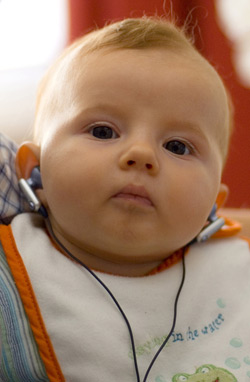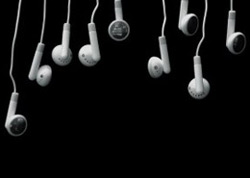 There are plenty of people that make good use of noise cancelling earbuds and enjoy the benefits they can provide. Even so, anyone that has every owned a pair will tell you that the technology is not without its issues. None of these have to be show stoppers that ruin the experience. It is helpful though to be aware of these points before you jump in and purchase some.
There are plenty of people that make good use of noise cancelling earbuds and enjoy the benefits they can provide. Even so, anyone that has every owned a pair will tell you that the technology is not without its issues. None of these have to be show stoppers that ruin the experience. It is helpful though to be aware of these points before you jump in and purchase some.
White Noise
There is typically a small amount of white noise involved with using headphones or earbuds with noise cancelling technology. This problem is generally minimal. Most people will tell you that they simply get used to it. Yet personal opinions vary as to what the threshold is between minor background noise and an unacceptable annoyance. If you are flying, on a train or in any other situation where you would like to shut a constant noise like a jet engine, a bit of background white noise is not much of an issue. On the other hand if you are an audiophile and are looking for a perfect sound system – you want exquisite sound reproduction and noise cancelling capability – then you might be a bit perturbed by this issue.
Power/Batteries
The noise cancelling capabilities work through creating sound waves that literally cancel the unwanted sounds. Creating sound waves takes energy. Noise cancelling earbuds therefore need to have a power source. This is typically a small addition, in the form of a small box, that is added somewhere along your earbud’s wires. Clearly this added bulk is not very welcome. Manufacturers realize the bummer factor associated with having something more added to the typical earbud/wire arrangement. Some effort is usually made to create a battery/power system that is not too intrusive or uncomfortable. Perhaps unsurprisingly it is the more expensive earbuds that tend to have more effort put into design and ergonomic considerations. They tend to have more elegant solutions to the “have to have a power source” problem.
The need for power also creates another issue. When you are using your headphones away from home your batteries may run out of juice. Depending on your earbuds, this can mean the sound cancelling will not work or it can mean your earbuds will not work at all.
Noise Cancelling Amplifier
Each earbud has two sound producing systems. One system recreates the sound you want to hear: music, the radio, an audio book, etc. The other sound production system creates the sound waves that disrupt and wipe out the unwanted sounds: jet engines, bus motors, etc. Most active noise cancelling earbuds have longer earpieces than slimmer models that can practically disappear once they are placed into your ears. Even so, many noise cancelling earbuds are only slighter larger.
Some sounds are cancelled well and others, not so well.
Constant sound or noise is generally what sound cancelling does a great job with. Problems arise with sudden or uneven sounds. A variably timed and sharp clanging or banging, for instance, is harder to filter out. This also applies to someone sitting behind you on a plane that is excitedly talking and regularly varying the modulation of their voice. Interestingly if you put this same person into a crowded room where many people are talking, everyone’s voices form a din that noise cancelling can handle quiet nicely.
Baby with earbuds photo courtesy creative commons license, image provided by http://www.flickr.com/photos/inferis/227667437/
